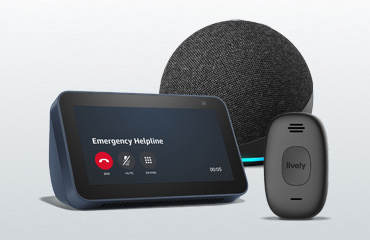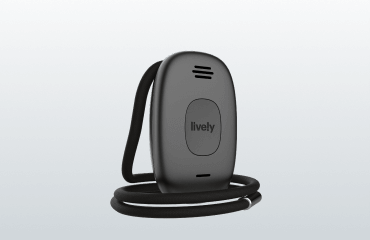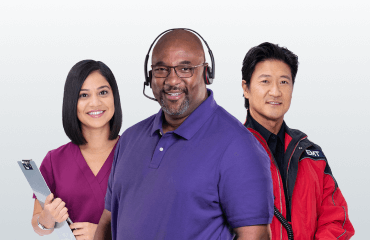Medical alert systems, also called personal emergency response systems (PERS), are lightweight, wireless, mobile devices that work with urgent response service providers to deliver an easy, accessible, and low-cost way for seniors to stay safe, at home and on the go.
...a simple press of the emergency button connects the user to a response agent.
In the event of an emergency, a simple press of the emergency button connects the user to a response agent who can identify the senior and his or her location, contact family, and dispatch emergency medical services. These systems are incredibly effective and save lives daily.
Some PERS now offer medical alert systems with GPS and fall detection services to keep seniors safe and independent.
What is GPS?
The Global Positioning System (GPS) is a network of 24 satellites orbiting above the Earth. The system was originally developed and used by the United States military but, now anyone with a GPS device—a mobile telephone or handheld GPS unit—can utilize the radio signals broadcast by these satellites.
How does GPS work?
According to GPS.gov, wherever you are in the country, at least four GPS satellites are always visible. Each GPS satellite transmits information about its position and the current time at regular intervals. These signals are captured by the GPS device, which estimates the distance of each satellite based on how long the messages took to arrive. Once the information on the distance of at least three satellites is received, the GPS device can determine your location using a method called trilateration.
Benefits of GPS tracking for medical alert systems
Traditional medical alert systems (also called ‘in-home medical alert systems’) are designed to be used within the home and have a range of fewer than 1000 feet. In-home medical alert systems have a base unit that connects to your landline telephone, and communicates with the wearable emergency pendant. During a health emergency or fall, you press the help button on the pendant, which signals the base unit to contact the medical alert system's monitoring center. Through the two-way speakerphone on the base unit, you can speak with the monitoring center.
Mobile medical alert systems with GPS are created to be used both inside and outside of the home. Real-time GPS trackers within medical alert systems are proving to be an essential tool in raising senior safety. In recent years, increasingly more seniors have chosen to use mobile alert systems as they are more adaptable and supportive to active lifestyles. Benefits include:
Maintain independence. A GPS medical alert system is designed for people who are independent and not homebound.

These devices can be taken anywhere there is a cell phone signal.
Location detection. Since these medical alert devices are connected to a cellular network
, you can go almost anywhere with a wireless signal. You can walk up the street, go fishing, run errands, picnic with the grandchildren at the park with the assurance that if you need help, you can get it quickly.
Real-time data. Caregivers can stay informed with tracking apps for some products. Authorized contacts can launch these apps via a smartphone or web to view information about a family member using an applicable device. These services usually include your current location on a map through patented GPS technology, alerts when an emergency calls are made, and the power level of the device.
State-of-the-art technology. Modern day mobile medical alert systems incorporate nationwide wireless voice, data, and GPS technology to deliver simultaneous medical monitoring services and location tracking for accelerated personal emergency assistance at home and away.
Portable. These devices can be taken anywhere there is a cell phone signal.
Accuracy. Highly-trained agents from the best services use the information in your personal profile, real- GPS information from a tracking system, and live communication between you and the agent to determine your precise location. Agents from the top services are U.S.-based and IAED (International Academies of Emergency Dispatch) certified.
Medical alert systems with GPS: How do they work?
Since medical alert systems with GPS are connected to cellular and GPS networks, emergency responders can use the cellular signal to determine your location. Like in-home medical alert systems, there are a few simple steps to the mobile emergency response process.
Step 1: Press your pendant’s emergency call button. The monitoring center will immediately receive your information and location.
Step 2: An agent will establish communication and assess your situation. Based on your need, the agent will contact a family member or emergency services.
Step 3: Wait for help to arrive.
What products have GPS?
Most medical alert devices and cellphones offer GPS. It's an essential component in allowing urgent response agents to locate you in case of an emergency, and therefore, it's vital for seniors who want to stay active and independent.
Here’s more from Lively.
swipe for more
scroll or use your arrow keys for more
scroll for more
use your arrow keys for more



